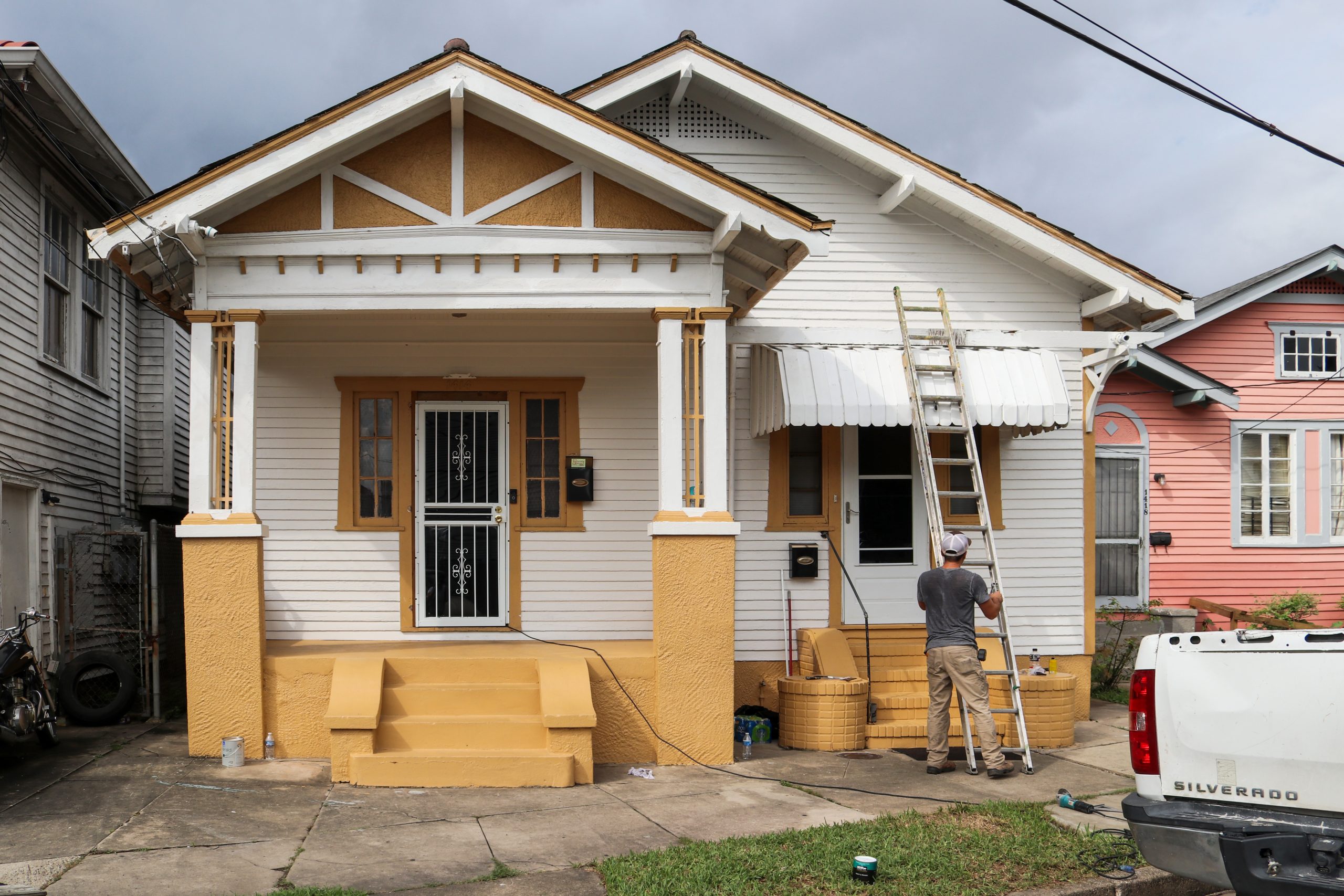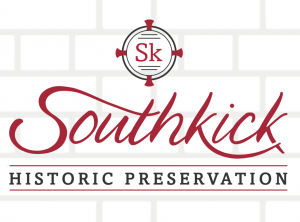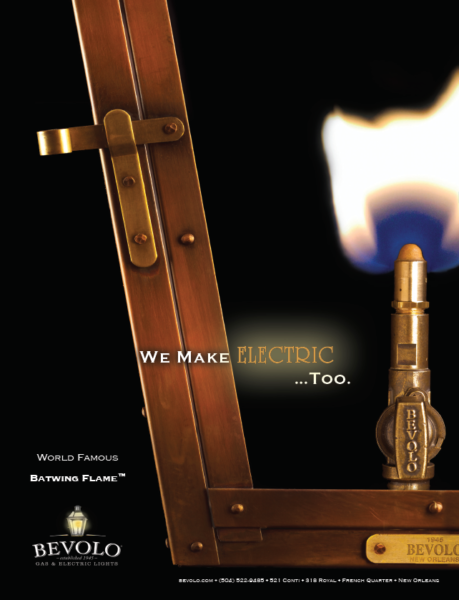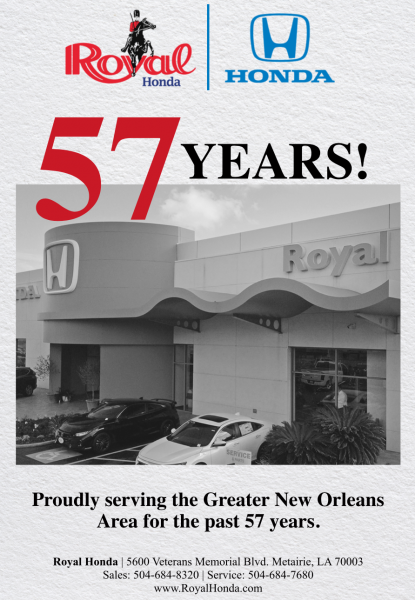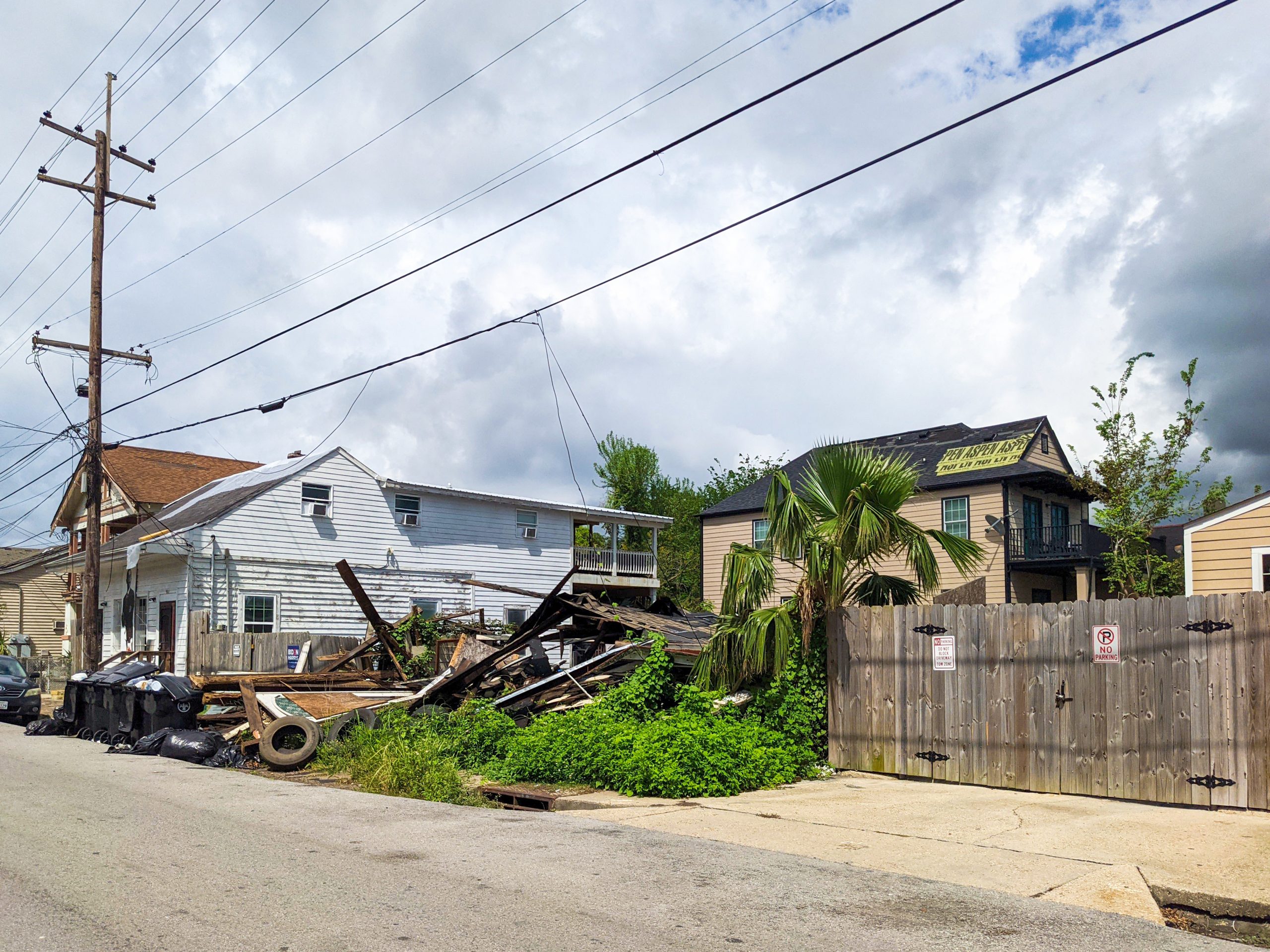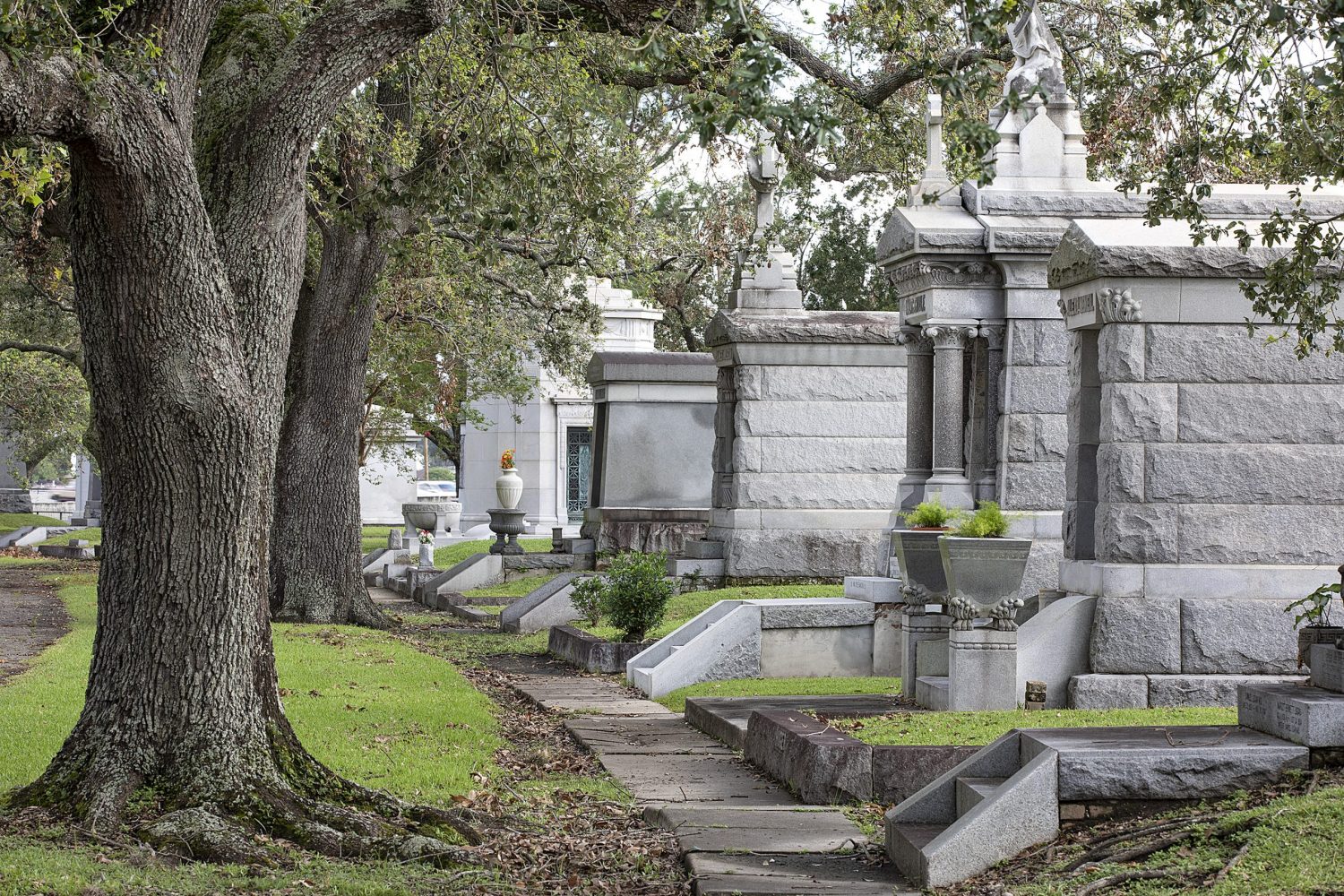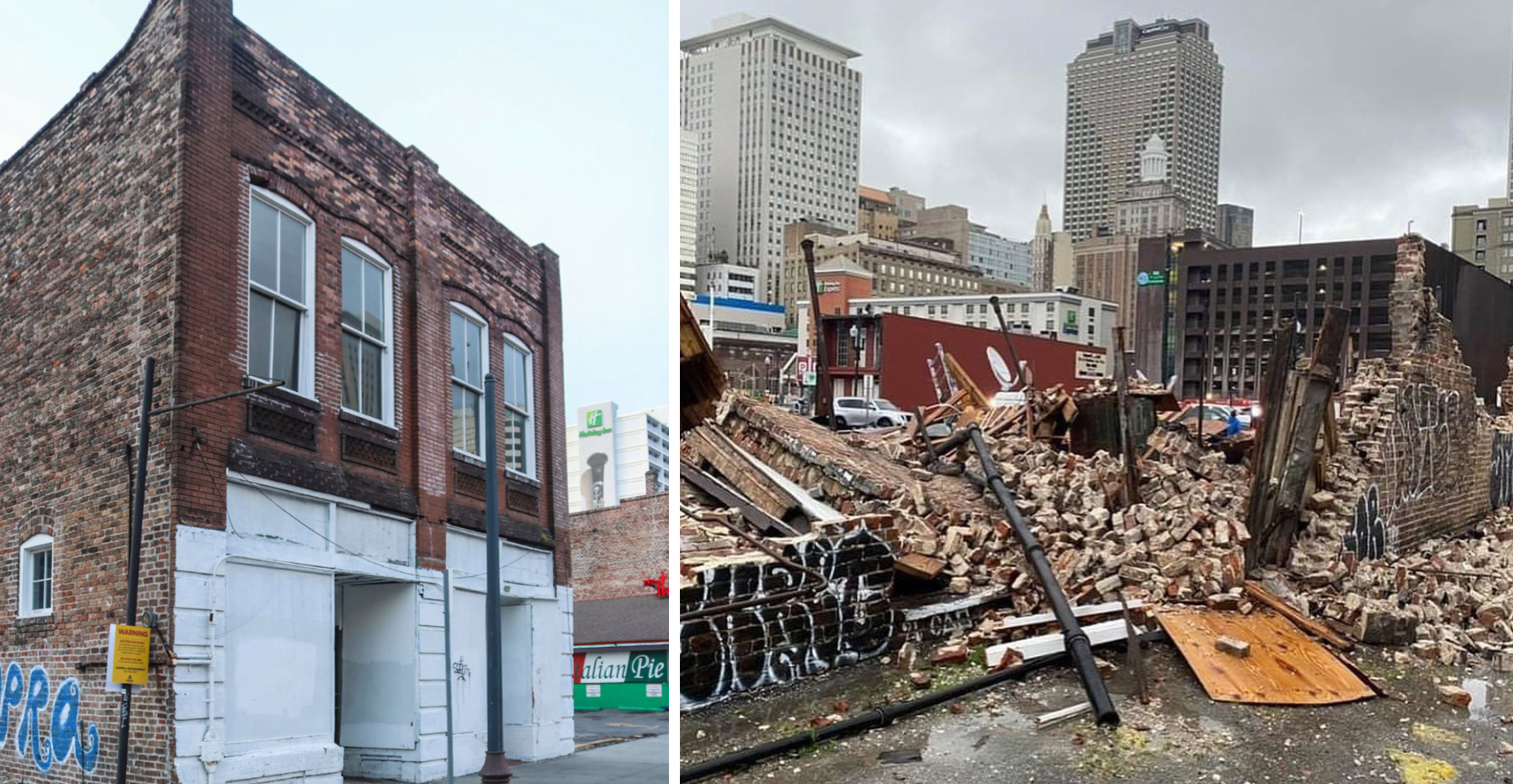This story appeared in the October issue of PRC’s Preservation in Print magazine. Interested in getting more preservation stories like this delivered to your door nine times a year? Become a member of the PRC for a subscription!
The past two years have brought a great deal of difficulties to New Orleans. Multiple disasters, including a global pandemic and powerful hurricanes, have only underscored the importance of home and community.
During these tumultuous 2020s, Revival Grants — PRC’s newest neighborhood revitalization program — has steadfastly worked behind-the-scenes to make big impacts through small grants and home repairs, helping to keep longtime New Orleanians safe and in their homes.
The PRC Revival Grants program launched in November 2019 to provide free home repairs for low- and moderate-income homeowners in local historic districts. Many of our city’s longtime homeowners struggle financially to keep up with maintenance or repairs on their houses. Those who live in local historic districts and are unable to make needed repairs can be issued citations and fines from the city’s Historic District Landmarks Commission. The Revival Grants program was launched to address this specific need and help make preservation more accessible to New Orleanians of modest incomes, who often are the culture bearers of our city.
Since its launch at the end of 2019, the program has helped more than a dozen families and counting. The pilot program began in the Tremé historic district because low-income residents in that neighborhood have been particularly burdened with rising property values and taxes.
This fall, the PRC is expanding the Revival Grants program to all full-control HDLC districts in the city.
Advertisement
Historic District designation by the city is vital for protecting New Orleans’ historic neighborhoods from unnecessary demolitions, speculative development and opportunistic house-flippers who might otherwise rip out a home’s irreplaceable architectural details and substitute them with lower-quality substitutions— and, in turn, slowly chip away at the very fabric of the city’s unique neighborhoods.
The HDLC’s oversight is crucial, but complying with guidelines can be challenging for homeowners on fixed budgets, especially for low-income homeowners and the elderly who have lived in their homes for decades. Working hand-in-hand with HDLC staff, the PRC developed the Revival Grants program to help bridge the gap.
To be eligible for Revival Grants, residents must own their house and have an income that does not exceed 80 percent of the Area Median Income. After a homeowner gets approved for the program, the PRC will use the HDLC’s citation notices on the property as a scope of work and address the repairs for immediate needs. When the work is complete, the HDLC staff will work with the PRC to waive the fines associated with the prior citations to help homeowners start anew with a clean slate.
In the short term, the grants provide repairs to make these older homes more secure and to help homeowners avoid continued violations or fines. In the long-term, the program helps to fight displacement from historic neighborhoods. Homeowners are left with a safer home, and longtime residents of historic districts are able to remain there to pass the culture — and the generational wealth built through their family’s home — to future generations.
To learn more about the Revival Grants program or to apply, visit prcno.org/programs/revival-grants
Let’s meet some of the PRC Revival Grants recipients.
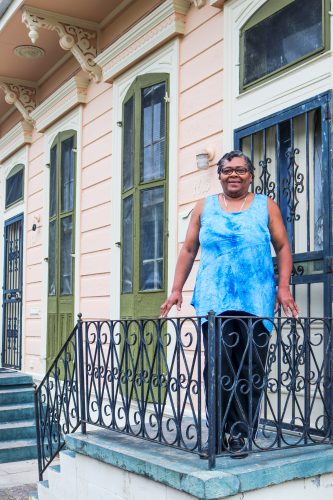 Paula Harvey has lived on Dumaine Street for more than three decades. Her Italianate-style camelback, which was built in the late 19th century, features many of its original historic details: segmental arch windows and doors, a wide overhang with ornate brackets, window and door cornices with scalloping, drop siding and quoins.
Paula Harvey has lived on Dumaine Street for more than three decades. Her Italianate-style camelback, which was built in the late 19th century, features many of its original historic details: segmental arch windows and doors, a wide overhang with ornate brackets, window and door cornices with scalloping, drop siding and quoins.
It’s a multigenerational home for Harvey’s family. Her son lives on one side of the double shotgun, and her granddaughter and great grandchildren temporarily moved in with her during the COVID-19 pandemic. Their home becomes lively during holidays and family gatherings when relatives both near and far come to visit.
During the first phase of repair work, the Revival Grants program removed a termite nest, treated termite damage and put the home under a contract with DA Exterminating Co. Other repairs included replacing deteriorated weatherboards, gutters and a soffit, as well as repainting the home’s front facade.
Revival Grants’ work on this home is still in progress, but Hurricane Ida caused damage to the roof and an interruption in the construction schedule. After the storm, teams from Youth Rebuilding New Orleans helped to install a tarp over the roof until repairs can be made, and work will continue on the home.
Photos by Liz Jurey
How long have you and your family lived in your home?
I’ve been here about 35 years in the Tremé area. I raised my three kids here, and they’re all grown and gone, but sometimes they fly back. My son came back; the house is so big just for one person, so he lives next door to help take care of his mom. I have two boys and a daughter who’s in the police force. I think I have — I almost lost count! — I have six grandkids and two great grandboys. When COVID hit, my granddaughter lost her apartment with her two boys, so I said ‘let’s pack up, let’s get storage, and come on. There’s more than enough room here.’
What do you love most about your neighborhood?
The brass bands! The bands will strike up any time, especially for funerals and parties. And you know some of the musicians personally. They’re not standoffish; you can talk to them and take pictures with them. It’s just like an extended family around here. Down to earth people.
What kind of work has Revival Grants assisted you with? What has it been like to work with the program?
They put gutters up, and before the storm, they were doing paint and sprucing up, and I know they’re going to come back and finish it. It looks so nice; just to have fresh paint is just wonderful. But that was the main thing I needed, the gutters, and they changed some weatherboards where the old gutters fell down, where the water was just hitting the side of the house.
It’s just been wonderful. You really just didn’t think people existed to be so nice like this, because they don’t have to do what they do, but they’re wonderful. Words just can’t express.
Advertisement
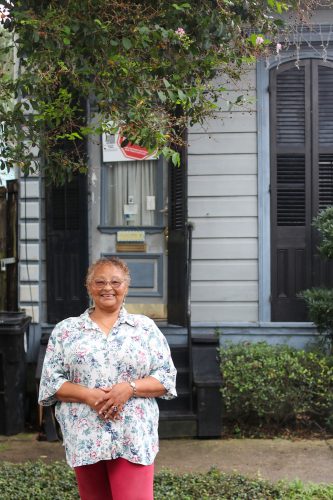 Before Hurricane Katrina, Darlene Jones rented a house Uptown, but she was inspired to buy her first home after the storm to help the city bounce back. While visiting a friend who lived in Tremé, Jones noticed a “for sale by owner” sign in the window of a single shotgun house on St. Philip Street. After she called the owners and got her first look inside, it was love at first sight.
Before Hurricane Katrina, Darlene Jones rented a house Uptown, but she was inspired to buy her first home after the storm to help the city bounce back. While visiting a friend who lived in Tremé, Jones noticed a “for sale by owner” sign in the window of a single shotgun house on St. Philip Street. After she called the owners and got her first look inside, it was love at first sight.
The two-bay single shotgun may have a small footprint, but its architectural details and historic charm give the petite home an abundance of character. The late-19th century Italianate-style house includes segmental arch openings, quoins and an overhang with ornate brackets. The home’s historic wood windows with wavy glass are some of Jones’ favorite features of the house.
During the first phase of repair work, the Revival Grants program replaced the roof after it sustained damage from Hurricane Zeta in 2020. Thankfully, the new roof remained unscathed during Hurricane Ida this August. Phase two of the work, which will begin soon, will address foundation issues and leaks toward the back of the home.
Photos by Liz Jurey
What do you love most about your neighborhood?
I’m kind of the baby homeowner on the block, and I’ve been there 16 years. Everybody else has been there 30, 40 or 50 years. Almost everybody on that block has been on that block for decades or grew up in that area, even the renters. We call ourselves the St. Philippians, because it’s St Philip Street, and we do everything together. We have block parties, and everybody knows everybody else, we check in on each other, and it’s a great place to be. It’s comfortable, it’s safe here, and it’s a wonderful place to be.
How long have you lived in your home?
Prior to Katrina, I wasn’t really interested in owning a home because it was just me. But after Katrina, I realized that it was going to take some people who didn’t have small kids and who wanted to see New Orleans come back to move back and buy a home, and that’s how I ended up buying my home in 2007.
I bought my home after only seeing it, and I never looked at another house. It’s really small, only 825 square feet. It was built in the late 1800s, and I love it!
What kind of work has Revival Grants assisted you with? What has it been like to work with the program?
Upkeep of a home is really difficult when you’re alone. I’m a senior, and it makes it more difficult to get things done, especially when you’re on just a disability pension. So, I’m happy (to have found) PRC.
So far, they have put a new roof on. The back of my house has an extension where the washroom and the bathroom is now, and that extension is sinking and beginning to separate from the main house. It’s causing gaps in the walls of my house, and the vines are growing through it, and it’s just a big nightmare. So PRC is going to raise that part back up and then put flashing in between the gap so that it won’t leak any more, and that work is supposed to begin soon.
You guys are helping just regular people, especially the ones that are seniors. It was getting to be scary the way I was seeing things around my house that there was nothing I could do about, and I couldn’t find anybody to help me. Just the idea of the PRC contacting me and initially doing the roof, and now this part where we’re going to put the flashing, even that just gives you hope and makes you feel so much better, because we all know so many people who lost their homes or were priced out of their homes in all kinds of ways.
Do you have any future hopes and dreams for your home?
I want to paint it a different color. I need some New Orleans colors! Something that says, ‘look at me, I’m so pretty, I’m 200 years old but I still look good!’ That was the color that it was when I bought it, so those are my big dreams for my little house.
Advertisement
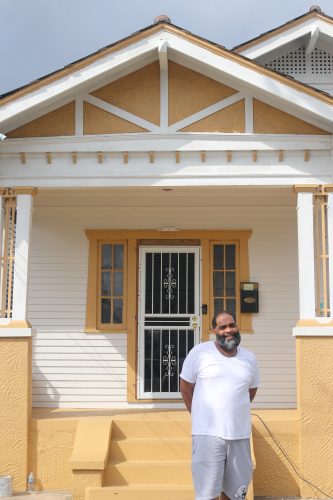 Mary Lynn recently moved back into her childhood home to become a full-time caretaker for her mother, who has dementia. Three generations of the family live in the home on Laharpe Street, with Mary Lynn and her mother, Elaine Block, on one side of the double shotgun, and Lynn’s son, Gilbert Darby III (pictured here), on the other side.
Mary Lynn recently moved back into her childhood home to become a full-time caretaker for her mother, who has dementia. Three generations of the family live in the home on Laharpe Street, with Mary Lynn and her mother, Elaine Block, on one side of the double shotgun, and Lynn’s son, Gilbert Darby III (pictured here), on the other side.
The house’s early-20th-century Craftsman-style details include paired square columns, latticework, wide overhanging eaves with exposed roof beams and rafter tails, and stucco with a half-timbering effect on the front gable. The Revival Grants program worked to rebuild one of the home’s damaged front porches, repaired gutters, removed satellite dishes and repainted the front facade.
The home has been in the family for nearly a century. After repairs are all made, Lynn hopes that the property can continue to be a home base for the family and be passed down to future generations.
Gilbert Darby III, Mary Lynn’s son, also lives in the family’s home. Photos by Liz Jurey.
How long has your home been in your family?
I think since the ’20s or ’30s. It was my grandparents’ house, my dad’s parents’ house. My parents actually moved to Chicago, and I was born in Chicago. We moved back when I was a junior in high school, and I lived here and went around the corner to McDonogh 35. This is my mother’s home now, and I’m here as her caretaker.
What kind of work has Revival Grants assisted you with?
They fixed our porch on my son’s side because it was breaking and sinking. They painted the front of the house; they painted our steps; and they are supposed to come back and do the gutters. And they have a few little things to touch up, but other than that, that’s what they have done for our home. And we really appreciate it.
What has it been like to work with the program?
When my dad was alive, my dad did all of the work. I just moved back to take care of my mom, so I’m trying to do or get done the things he would have done. And it really helped, with me being unemployed and my mom’s caretaker 24/7, it really helps.
Anna (Pernas, Revival Grants director) is great. Anybody interested in the program needs to try and join and see if they can get the help on their house that they need.
—
ELIGIBLE HISTORIC DISTRICTS
Algiers Point • Bywater • Canal Street • Carrollton Avenue • Esplanade Ridge • Faubourg Marigny • Garden District • Holy Cross • Irish Channel • Lower Garden District • Lafayette Square • Picayune Place • St. Charles Avenue • Tremé (River side of Claiborne Avenue)
—
The PRC sincerely thanks the following organizations for supporting the Revival Grants program. Without them, these life-changing repairs would not be possible:
National Trust for Historic Preservation: African American Cultural Heritage Action Fund
National Trust for Historic Preservation: Richard & Julia Moe Fund
City of New Orleans
1772 Foundation
Hancock Whitney
Regions Bank
Bentson Foundation
New Orleans Rotary Foundation, Inc.
The Lutz Family Fund
Louise H. Moffett Family Foundation
Mark Delestatius
Usdin-Weil Foundation
Davis “Dee” Allen is PRC’s Communications Associate and a staff writer for Preservation in Print.
Advertisements



